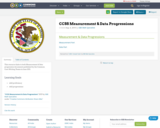
This resource links to both Measurement & Data progression documents published by the Common Core Writing Teams in June 2011.
- Material Type:
- Assessment
- Homework/Assignment
- Teaching/Learning Strategy
- Date Added:
- 05/09/2013

This resource links to both Measurement & Data progression documents published by the Common Core Writing Teams in June 2011.
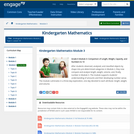
After students observed, analyzed, and classified objects by shape into pre-determined categories in Module 2, they now compare and analyze length, weight, volume, and, finally, number in Module 3. The module supports students understanding of amounts and their developing number sense. The module culminates in a three-day exploration, one day devoted to each attribute: length, weight, and volume.
Find the rest of the EngageNY Mathematics resources at https://archive.org/details/engageny-mathematics.
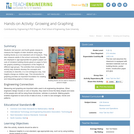
Students visit second- and fourth-grade classes to measure the heights of older students using large building blocks as a non-standard unit of measure. They also measure adults in the school community. Results are displayed in age-appropriate bar graphs (paper cut-outs of miniature building blocks glued on paper to form bar graphs) enabling a comparison of the heights of different age groups. The activities that comprise this activity help students develop the concepts and vocabulary to describe, in a non-ambiguous way, how heights change as children age. This introduction to graphing provides an important foundation for creating and interpreting graphs in future years.
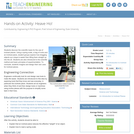
Students discover the scientific basis for the use of inclined planes. Using a spring scale, a bag of rocks and an inclined plane, student groups explore how dragging objects up a slope is easier than lifting them straight up into the air. Also, students are introduced to the scientific method and basic principles of experimentation. To conclude, students imagine and design their own uses for inclined planes.

In this activity using a balance scale students practice weighing items to see how heavy they are. Cubes are used in the balance as units of measure so students may easily count them.
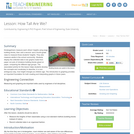
Kindergartners measure each other's height using large building blocks, then visit a 2nd and a 4th grade class to measure those students. They can also measure adults in the school community. Results are displayed in age-appropriate bar graphs (paper cut-outs of miniature building blocks glued on paper to form a bar graph) comparing the different age groups. The activities that comprise this lesson help students develop the concepts and vocabulary to describe, in a non-ambiguous way, how height changes as children get older. The introduction to graphing provides an important foundation for both creating and interpreting graphs in future years.
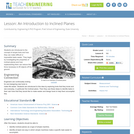
Students are introduced to the concept of simple tools and how they can make difficult or impossible tasks easier. They begin by investigating the properties of inclined planes and how implementing them can reduce the force necessary to lift objects off the ground.
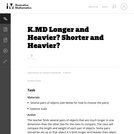
In this activity students compare objects to see which is longer and heavier than the other.

Explore the Mathematics Student Choice Boards for PreK – 1st grade created by the Washington Office of Superintendent of Public Instruction.

This resource was created by the Washington Office of Superintendent of Public Instruction.

In this lesson, students will build fluency using the language of measurement by collecting data about various plants in the outdoor classroom.

(Nota: Esta es una traducción de un recurso educativo abierto creado por el Departamento de Educación del Estado de Nueva York (NYSED) como parte del proyecto "EngageNY" en 2013. Aunque el recurso real fue traducido por personas, la siguiente descripción se tradujo del inglés original usando Google Translate para ayudar a los usuarios potenciales a decidir si se adapta a sus necesidades y puede contener errores gramaticales o lingüísticos. La descripción original en inglés también se proporciona a continuación.)
Después de que los estudiantes observaron, analizaron y clasificaran objetos por forma en categorías predeterminadas en el Módulo 2, ahora comparan y analizan la longitud, el peso, el volumen y, finalmente, el número en el módulo 3. El módulo respalda a los estudiantes la comprensión de las cantidades y sus Desarrollo de sentido de los números. El módulo culmina en una exploración de tres días, un día dedicado a cada atributo: longitud, peso y volumen.
Encuentre el resto de los recursos matemáticos de Engageny en https://archive.org/details/engageny-mathematics.
English Description:
After students observed, analyzed, and classified objects by shape into pre-determined categories in Module 2, they now compare and analyze length, weight, volume, and, finally, number in Module 3. The module supports students understanding of amounts and their developing number sense. The module culminates in a three-day exploration, one day devoted to each attribute: length, weight, and volume.
Find the rest of the EngageNY Mathematics resources at https://archive.org/details/engageny-mathematics.
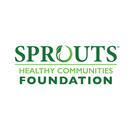
In this engaging unit, students will design and plant a square-foot garden that will be their central tool.Through the growing season, they will explore nutrition content in their everyday lives and see how it relates to what they are growing.
![OREGON MATH STANDARDS (2021): [K.GM]](https://img.oercommons.org/160x134/oercommons/media/courseware/lesson/image/13138_ODE_Math_Logo_2018-H_color_BvjqVNy.png)
The intent of clarifying statements is to provide additional guidance for educators to communicate the intent of the standard to support the future development of curricular resources and assessments aligned to the 2021 math standards. Clarifying statements can be in the form of succinct sentences or paragraphs that attend to one of four types of clarifications: (1) Student Experiences; (2) Examples; (3) Boundaries; and (4) Connection to Math Practices.
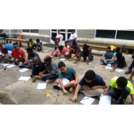
Teacher Overview Text